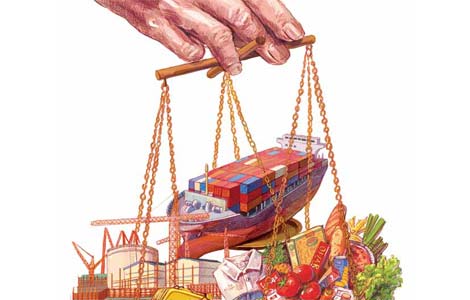Seawater can save thirsty country
Updated: 2013-05-06 00:53
By WANG QIAN (China Daily)
|
||||||||
More government support, including subsidies and a favorable pricing mechanism, is needed for the country to use desalinated seawater to quench its thirst, a top industry expert said.
"The lack of an effective pricing mechanism for desalinated water and support for an operable policy is affecting the development of the country's sea desalination industry," said Li Linmei, director of the State Oceanic Administration's Institute of Seawater Desalination and Multipurpose Utilization in Tianjin.
The country aims to produce 2.2 million cubic meters of desalinated seawater daily in 2015, about three times current capacity, according to a National Development and Reform Commission plan released last year.
Current domestic water prices range from 2.4 yuan to 4.9 yuan a metric ton in the coastal regions, while the price of water for industry ranges from 3.3 yuan to 7.9 yuan a ton, according to ChinaWaterNet.
However, desalination plants can produce 674,000 tons daily at a cost of about 5 yuan ($0.80) a ton — not including infrastructure such as pipelines.
Li said the government should consider bringing desalinated water into the water grid.
Aside from subsidies and funding for pilot programs, Li believes desalination is a key part of water security.
"The seawater desalination industry is as important as water conservancy projects for China to cope with its water shortage," Li said.
China suffers from severe water shortages, nearly 54 billion cubic meters on average every year. This means that more than 66 percent of cities experience water shortages.
To compound that difficulty, water consumption is expected to surge to about 700 billion cubic meters in 2030, up from 600 billion cubic meters.
Facing such a severe shortage, authorities are taking measures.
In March, the NDRC identified the regions and companies selected to carry out the first desalination projects, including heavily populated areas such as Zhejiang and Hebei provinces, and the municipalities of Shenzhen and Tianjin.
The commission asked regions and companies to encourage desalinated water use for industrial and domestic purposes.
The industry is expected to get a 10-billion-yuan boost from the plan.
Li said the policy showed the country's determination and confidence in boosting the industry.
Key technology
Reverse osmosis technology and other areas of development vital for desalination have been mastered, Li said.
Osmosis technology pushes water under high pressure through fine membranes, filtering the salt.
Coupled with the distilling process of high-pressure steam and evaporators, this means that the technology is, in more ways than one, on tap.
The country has 16 seawater desalination plants with a daily capacity of more than 10,000 metric tons of fresh water, according to the NDRC.
"Although we have made great progress in technology, large-scale plants in China still depend on foreign technology," Li said.
Desalination is used in more than 150 countries to supply water to more than 200 million people.
The Tianjin Institute of Seawater Desalination and Multipurpose Utilization is strengthening international cooperation to raise China's domestic seawater desalination technology and boost exports, Li said.
There are concerns about the potential environmental effects of large-scale seawater desalination plants, especially wastewater discharges.
Li said the government should launch an environmental assessment before any major upgrade.
Related readings:
China's nearshore seawater quality degrading
China names regions for seawater desalination pilots
China to re-verify seawater warning levels
China unveils plan to boost seawater desalination
Beijingers could drink seawater within 3 years

 Michelle lays roses at site along Berlin Wall
Michelle lays roses at site along Berlin Wall
 Historic space lecture in Tiangong-1 commences
Historic space lecture in Tiangong-1 commences
 'Sopranos' Star James Gandolfini dead at 51
'Sopranos' Star James Gandolfini dead at 51
 UN: Number of refugees hits 18-year high
UN: Number of refugees hits 18-year high
 Slide: Jet exercises from aircraft carrier
Slide: Jet exercises from aircraft carrier
 Talks establish fishery hotline
Talks establish fishery hotline
 Foreign buyers eye Chinese drones
Foreign buyers eye Chinese drones
 UN chief hails China's peacekeepers
UN chief hails China's peacekeepers
Most Viewed
Editor's Picks

|

|

|

|

|

|
Today's Top News
Shenzhou X astronaut gives lecture today
US told to reassess duties on Chinese paper
Chinese seek greater share of satellite market
Russia rejects Obama's nuke cut proposal
US immigration bill sees Senate breakthrough
Brazilian cities revoke fare hikes
Moody's warns on China's local govt debt
Air quality in major cities drops in May
US Weekly

|

|








